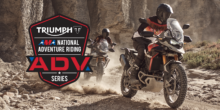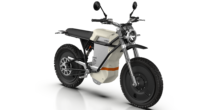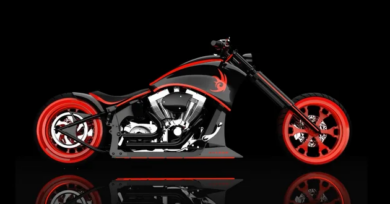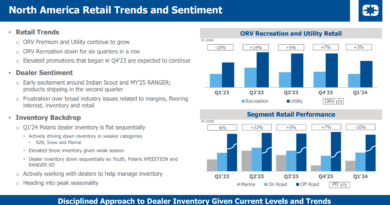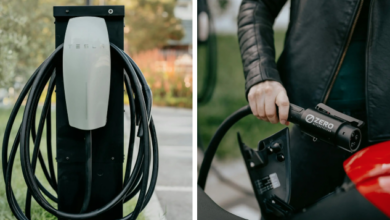Arresting brake technology on the way
Hayes bringing ABS to snowmobiles, ATVs and side-by-sides
Today’s most advanced chassis controls have achieved remarkable performance gains in the automotive world. Using any combination of stability control, electronic throttle control, anti-lock braking and electronic limited-slip differentials, among others, modern sports cars compensate when drivers enter turns too quickly, regulate braking and control throttle to maintain poise in aggressive situations and generally fool average drivers into thinking they’re the next Jeff Gordon.
Through the use of proprietary technology adapted from the auto world, braking experts at Hayes, part of HB Performance Systems, are poised to bring revolutionary chassis control technology to the powersports world, starting with adding anti-lock braking systems to snowmobiles, which promises to add stronger braking capabilities, improve stability and give drivers the ability to ride harder with more control than ever before.
Many driving advancements are possible by adding sophisticated controls to precisely monitor vehicle braking, wheel speed and throttle control. As controlled braking technology begins filtering through the powersports industry, consumers may soon witness a revolution that improves safety, capability and performance through the use of high-tech gadgetry.
Controlled braking on snow
With a wide footprint in the bicycle, motorcycle, ATV, UTV, snowmobile, agriculture and construction markets, Hayes is known in powersports as the OEM brake supplier for many vehicles in the dirt and snow markets. Polaris, Arctic Cat and Harley-Davidson are its largest OEM customers.
But Hayes isn’t content making simple brake components, and has invested significant resources to advance the state of the art in the industry. As the company sees it, many of the technologies that have revolutionized cars can also be applied to snowmobiles, ATVs and UTVs.
“We want to be the ones that lead the technology to this industry in all three segments — snowmobile, ATV and UTV — so we’ve developed a product strategy and established some intellectual property surrounding it, and feel that we’ll be there first,” said Kurt Person, vice president product development and chief technical officer at Hayes.
In its three-year gestation period, development has focused on adding stronger braking and refining the calibration to improve performance in all settings, from off-trail powder to firmly packed groomed trails or icy conditions. Its snowmobile system has been dubbed Trail Trac 1.0, and uses technology originally developed in the motorcycle world. Due to the simplicity of the system, dealers or handy consumers could install a system on a Polaris Rush in approximately one hour. The Rush is the only snowmobile application currently on sale.
Concurrently, development has proceeded for more complex systems in the ATV and UTV markets, the latter of which has seen unprecedented manufacturer investment in recent years.
Due to four wheels, as opposed to just one spinning track, ATV and UTV applications have required more complex systems adapted from the automotive industry. Trail Trac 2.0, its two-channel dirt-based setup, is not easily installed after assembly, and its adoption will require manufacturers to add it on the production line.
How it works
Thanks to experience with their automobiles, most people have a basic understanding of anti-lock braking technology. Sensors monitoring wheel speed control the brake calipers to prevent uncontrolled skidding, allowing motorists to maintain steering control in panic stops. This lifesaving technology initially faced pushback from consumers, but has since become mandatory safety equipment in the automotive industry. ABS has become one of the main components enabling today’s sophisticated stability and traction control systems.
At Hayes, two different systems seek to achieve similar safety goals, while also upgrading performance for high-level riders. Trail Trac 1.0, its one-channel hydraulic snowmobile system, uses similar speed sensors to regulate track slip and has modifications that allow slip in lower speed settings and deep powder. An on/off switch allows riders to turn the system off when desired.
“We know that there are situations where you do want to lock the track, when you come down to lower speeds, you don’t want the system to help you all the way to zero [mph] so we have a relatively high speed cutout,” said engineering manager Peter True.
Hayes claims the system reduces rider fatigue while allowing riders to brake later in corners, without losing control. It also prevents a snowmobile’s CVT from unwinding in transitions from braking back to throttle, which could extend drive belt life and allow snappier throttle response in tighter trail conditions.
Trail Trac 2.0, its more complex ATV and UTV system, offers similar benefits, including greater stability and straighter tracking in panic braking or high-speed riding. As side-by-sides continue gaining in popularity, as well as performance and capabilities, Hayes expects rapid adoption once the first OEM adds the technology to a vehicle.
As with any new vehicle technology, price is a major hurdle to adoption. Due to the higher price and performance of side-by-sides, the company expects it to be a natural segment to utilize controlled braking technology. Without naming names, the company says the technology has been eyed by most of the major manufacturers, and it expects the technology to hit the dirt marketplace in the near term, possibly before the first snowmobile factory application.
Hayes estimates a 150,000-mile life expectancy for both systems, and anticipates applications in both the utility and sport ends of the on-dirt spectrum.
A grassroots movement
Hayes set up a booth at this year’s Haydays snowmobile event in north-central Minnesota, a massive gathering referred to as the annual kickoff of the snowmobile season. With tens of thousands of snowmobile enthusiasts visiting during the two-day event, Hayes sought feedback from attendees on its snowmobile, ATV and UTV systems. Its other motive, perhaps most significantly, was demonstrating consumer interest that might prod one or more of the manufacturers to add controlled braking to its machines straight from the factory.
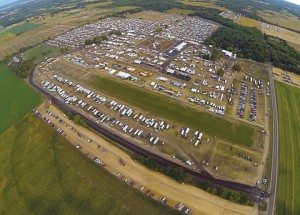
“I think generally the OEMs are wanting to ensure that the consumer has an interest in the technology and is willing to invest in it. That’s why we’ve taken it to this next step to gauge customer interest,” said Mike Kenny, vice president of powersports and specialty products at Hayes. “The technology is proven and it continues to evolve … it’s a question of getting that right blend of pricing and technology that a customer’s willing to invest in.”
Currently Trail Trac 1.0 carries an MSRP of $995 for a dealer-installed kit, and Hayes offered the kit at a discounted $749 during Haydays. Kenny said consumer interest was extremely supportive, with no complaints about the price being too high.
Expounding on the company’s motives for exhibiting at the snowmobile show, Kenny said proving the merits of the technology and driving grassroots acceptance is the key for pushing the OEMs to adopt the technology.
“That’s a big part of why we’re here,” he said. “It’s not only to cultivate customer interest, but to cultivate dealer relationships to do the installations and work with customers on become advocates.”
A natural evolution
As most off-road vehicles already have electronic throttle control (ETC) in their on-board ECUs, controlled braking is a significant development that, as mentioned, could lead to further advancements in chassis control technology that leverage the ability to electronically regulate both braking and throttle. With an eye toward future upgrades, Hayes eschews labeling its systems as strictly ABS.
“Electronic throttle control allows the software control to allow a traction control function, so you have on-throttle-type intervention in addition to brake intervention, so that’s another reason why we try not to use the term ABS, because our system is capable of doing significantly more,” Kenny said.
As the tech guy at the company’s booth, True said he doesn’t anticipate stability control in the near future due to the price and required bolstering of complex sensors for off-road duty, but said that it is possible. More immediately, the addition of controlled braking and ETC can provide many of the benefits of stability control for approximately half the price of automotive-grade systems.
While its initial business plan likely involved early OEM adoption, Hayes is unfazed and is taking the long game to convincing powersports manufacturers to pick up its controlled braking technology. As Kenny explained it, being first takes time and patience.
As many of its potential competitors bring a more industrial or automotive background, Hayes seeks to leverage its history in providing OEM brake systems, its expertise in chassis electronics and the fact that its project leaders are powersports enthusiasts that understand this technology must enhance the riding experience.
Person added that this technology is a natural as performance continues its dramatic improvements in all segments of the marketplace, fueling improvements in suspension and tire technology, among others.
“A lot of manufacturers are starting to realize that they need more brake power,” he said. “When you need more brake power and you’re traveling at faster speeds, it’s natural to start thinking the vehicles need some more sophisticated brake control technology, traction control technology. It’s a natural evolution we see coming.”

